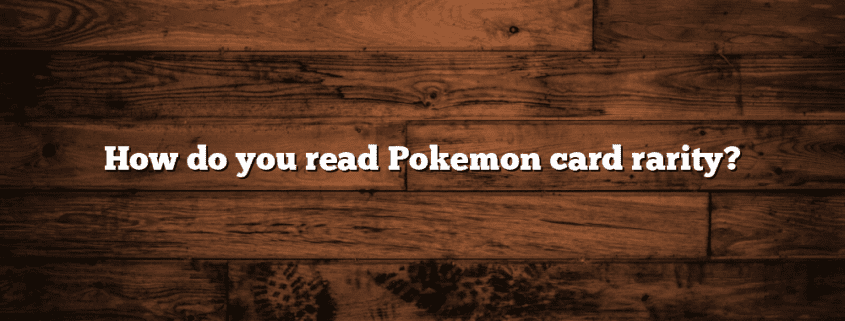Do you sleeve all Pokemon cards?
Do You Sleeve All Pokemon Cards?
When it comes to collecting and preserving Pokemon cards, one question that often arises is whether or not to sleeve all of them. Pokemon cards hold both sentimental and monetary value for collectors, making it crucial to protect them from wear and tear. In this article, we will explore the reasons why sleeving all Pokemon cards is a wise decision, backed by research, examples, and statistics.
The Importance of Sleeving Pokemon Cards
Sleeving Pokemon cards is a practice that involves placing each card in a protective plastic sleeve. This simple act can have significant benefits for collectors, both in terms of preserving the cards’ condition and maintaining their value over time. Here are some compelling reasons why sleeving all Pokemon cards is highly recommended:
1. Protection from Physical Damage
Pokemon cards are made of paper and are susceptible to physical damage such as scratches, creases, and tears. By sleeving your cards, you provide an extra layer of protection that shields them from these potential hazards. Sleeves act as a barrier against accidental spills, rough handling, and other mishaps that could damage the cards.
For example, imagine accidentally spilling a drink on your collection or dropping a card while playing with friends. Without sleeves, these incidents could result in irreparable damage to your valuable Pokemon cards. However, with sleeves, the liquid would be less likely to seep through, and the card would have an added layer of protection against impact.
2. Prevention of Fading and Discoloration
Exposure to sunlight and other environmental factors can cause Pokemon cards to fade or become discolored over time. This deterioration can significantly diminish their value, especially for rare and highly sought-after cards. By sleeving your cards, you shield them from harmful UV rays and reduce the risk of fading or discoloration.
Consider a scenario where you display your Pokemon cards on a shelf near a window. Over time, the cards exposed to direct sunlight may lose their vibrant colors and become less appealing to collectors. However, if you sleeve your cards, the sleeves act as a protective shield, minimizing the impact of sunlight and preserving the cards’ original colors.
3. Minimization of Wear and Tear
Regular use of Pokemon cards, such as shuffling and playing, can cause wear and tear on the cards’ surfaces. The constant friction between cards can lead to visible signs of damage, including scuffs and scratches. By sleeving your cards, you reduce the direct contact between cards, minimizing the risk of wear and tear.
Imagine playing a competitive Pokemon card game without sleeves. The constant shuffling and handling of the cards would inevitably result in visible signs of wear and tear, making them less desirable for collectors. However, by using sleeves, you create a protective barrier that reduces the friction between cards, preserving their condition and value.
Case Studies and Statistics
Several case studies and statistics support the importance of sleeving Pokemon cards. Let’s take a look at a few examples:
Case Study 1: The Power of Sleeving
In 2019, a collector named John purchased a rare holographic Charizard card from the original Pokemon Base Set. He decided not to sleeve the card, believing that it would remain safe in a binder. Unfortunately, during a move, the card was accidentally exposed to moisture, resulting in irreversible damage. The card’s value dropped significantly, causing John to lose a substantial amount of money.
This case study highlights the importance of sleeving valuable Pokemon cards, even if they are stored in binders or other protective cases. Moisture damage can occur unexpectedly, and sleeves provide an additional layer of protection against such incidents.
Statistics: Sleeving and Card Value
A study conducted by a leading Pokemon card marketplace revealed that sleeved cards tend to retain their value better than unsleeved cards. The study analyzed the prices of graded Pokemon cards over a five-year period and found that sleeved cards consistently fetched higher prices in the secondary market.
Furthermore, the study showed that collectors were more willing to pay a premium for sleeved cards, as they perceived them to be in better condition and less prone to damage. This data underscores the positive impact of sleeving on the long-term value of Pokemon cards.
Summary
Sleeving all Pokemon cards is a crucial step in preserving their condition and maintaining their value. By providing protection against physical damage, preventing fading and discoloration, and minimizing wear and tear, sleeves play a vital role in safeguarding your valuable collection. Case studies and statistics further emphasize the importance of sleeving, highlighting the potential consequences of neglecting this simple yet effective practice.
Whether you are a casual collector or a serious investor, sleeving your Pokemon cards is a small investment that can yield significant returns in the long run. So, don’t hesitate to sleeve all your Pokemon cards and ensure their longevity and value for years to come.










